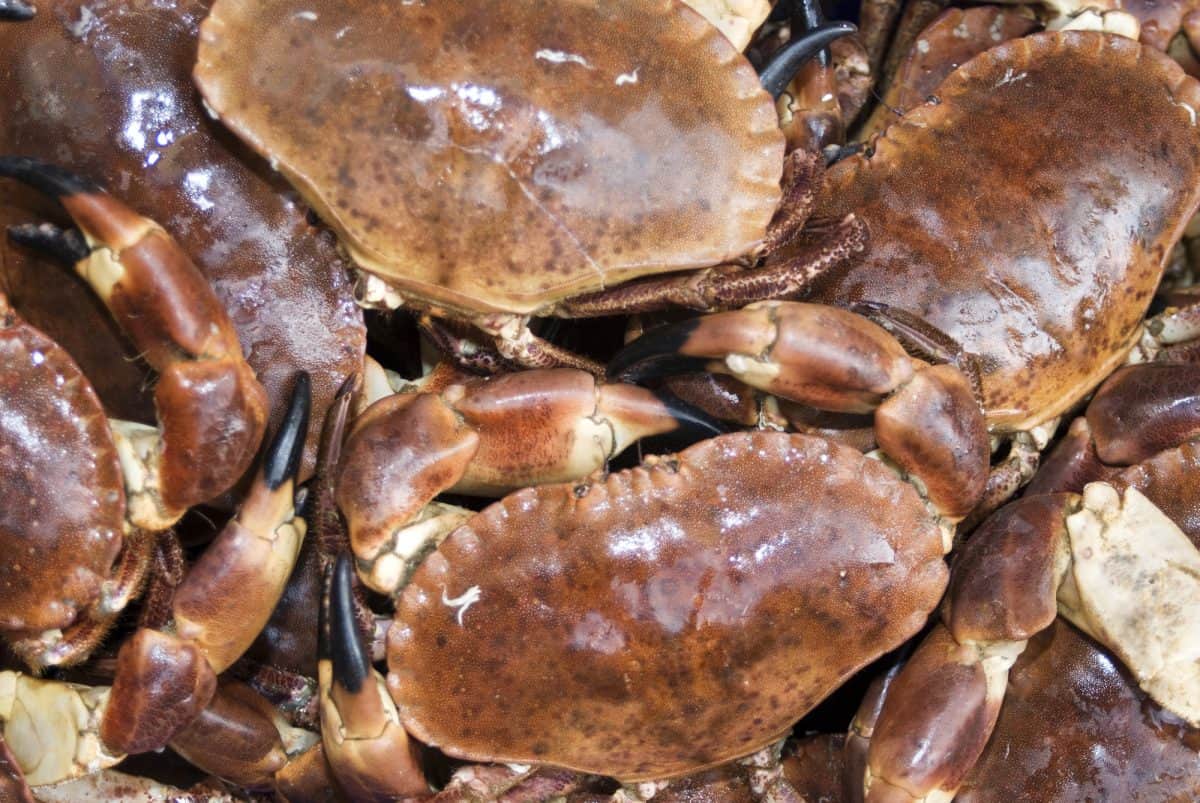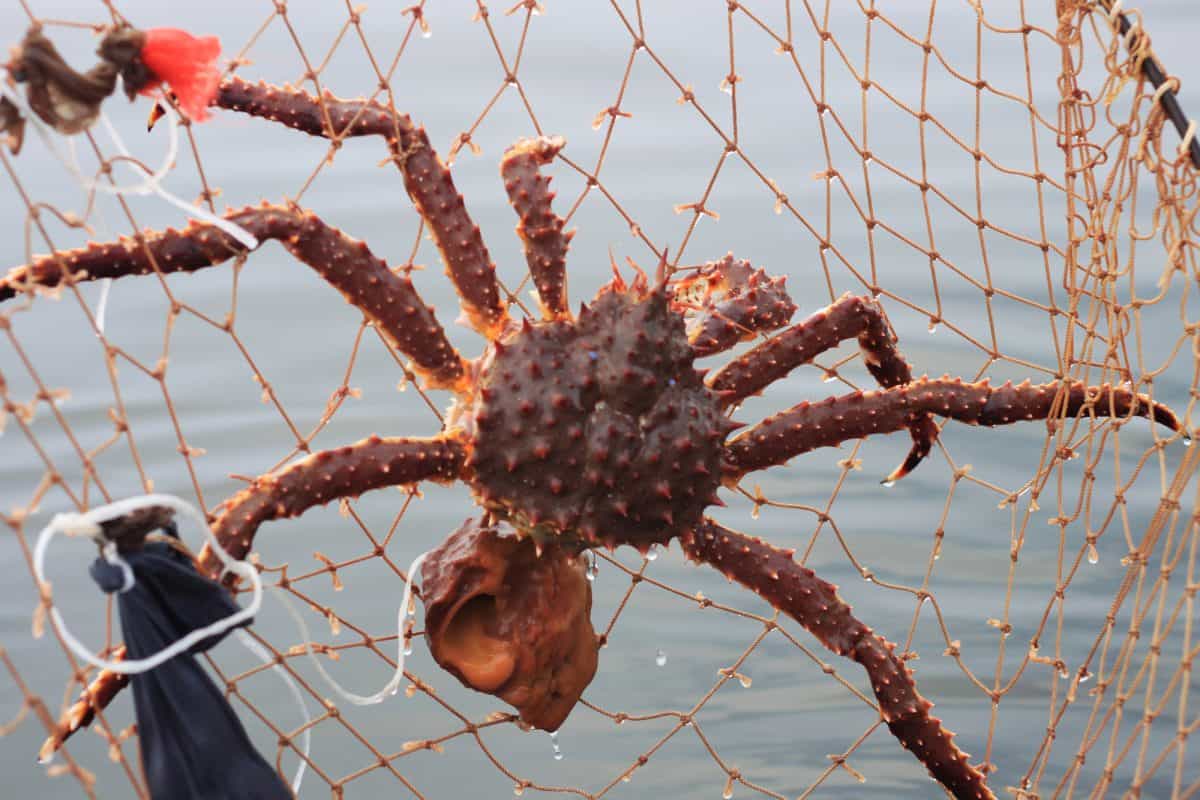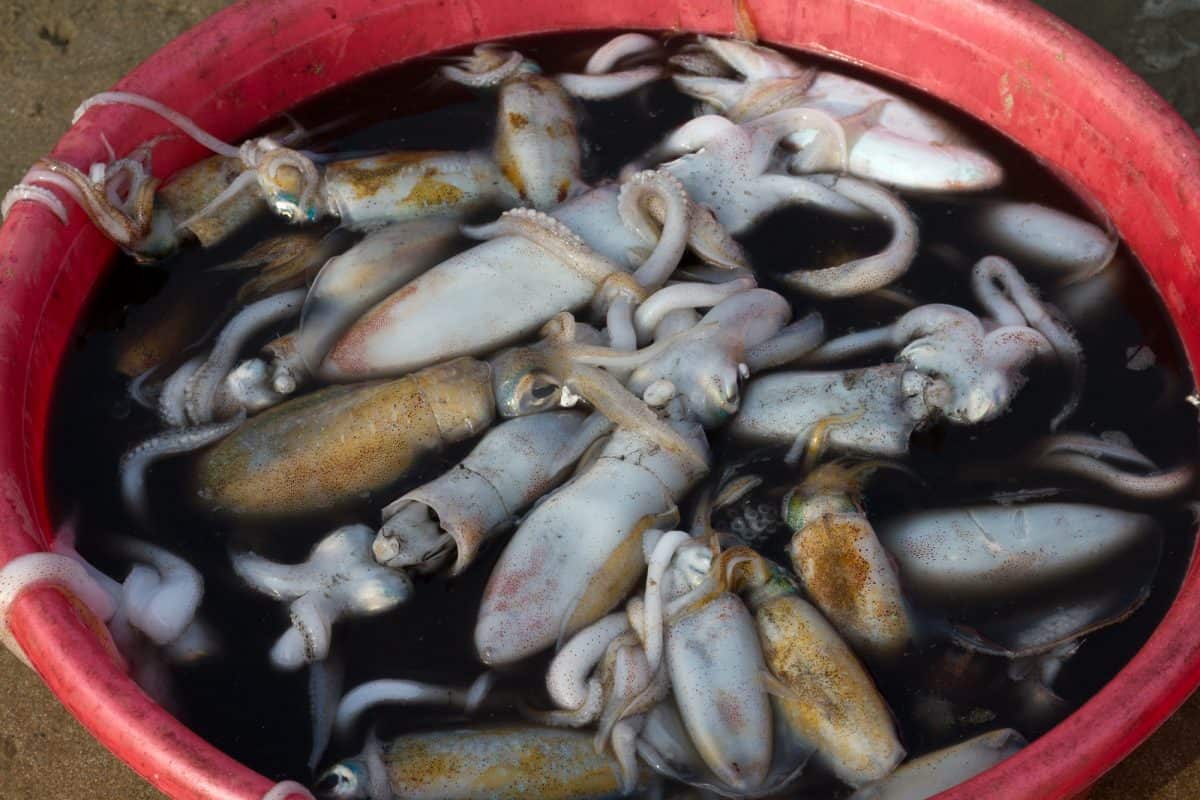If you’re a kayaker whose no stranger to launching your ‘yak and setting out on a fishing adventure, there’s a pretty good chance you’d enjoy kayak crabbing, too.
It’s fun, easy, and oh-so-exciting – and at times, it can feel like a downsized version of your favorite Deadliest Catch episode. Plus, it’s a fantastic way to widen your horizons as a kayak angler, kill some time on the water, and catch yourself a delicious dinner, too.
Catching crabs is a whole different ball game, though – even for seasoned kayak anglers – which is why I’ve put together this guide – so sit back and let us show you how it’s done!
Can You Crab From A Kayak?

There was a time when people asked the same question about kayak fishing and duck hunting from a kayak. And yet, both “hobbies” have seen quite a surge in popularity in recent years.
Does the same apply to kayak crabbing, though?
Yes – crabbing from a kayak is a thing.
Kayaks are probably the last thing you’d think of when someone mentions a crabbing boat – yet, here we are. Come to think of it, I’ve seen some people do it from their stand-up paddleboard!
It’s not that different from crabbing from other small watercraft, really – provided that you follow a few essential rules, that is.
When & Where To Go Crabbing?

Types Of Water & Crabbing Spots: Where Should You Go Kayak Crabbing?
There are many kayak crabbing locations found across the coastal areas of North America. And depending on where you launch your kayak, you can encounter – and hopefully, catch – different types of crabs, too.
For instance, if you choose to go crabbing along the northwest pacific ocean coast, you’re more than likely to catch a Dungeness crab or two. The east coast is home to blue crab, and kayaking in southern states and the Gulf of Mexico increases your chances of catching the small-but-delicious stone crab.
And if you’re lucky to have access to some of Alaska’s best crabbing spots, you’ll have the opportunity to land Tanner and Snow crabs – and, possibly, the King crab.
Also, remember that crabs like to chill on the ocean floor. They don’t have a favorite hiding spot, though, and will hide just about anywhere – from a sandy or rocky seabed to piers and docks.
Why not check out our free interface map of the top places to fish near you
When’s The Best Time To Go Kayak Crabbing?
You can’t paddle your way up to the nearest pier whenever you feel like it and expect to catch some crabs.
I mean, you can – but you’ll be going home empty-handed.
Several factors play into the best time to go kayak crabbing – including state-regulated crabbing seasons – but there’s one thing most “expert crabbers” agree on:
It’s best to go crabbing during slack tide – one to two hours before high tide and one to two hours after high tide – while the water’s still moving. That’s when you’re most likely to catch the crabs roaming about and foraging for food.
Crabbing From A Kayak: What’s The Law?

As with fishing and hunting, it’s good to check local regulations regarding catch size and limits, license requirements, and open season dates before you hop in your kayak.
Do I Need A License For Crabbing From A Kayak?
It’s impossible to give a straight “Yes” or “No” answer to this because the requirements change from one state to the next.
Here are a few examples of licensing requirements and fees in the US:
- Washington – You will need a state fishing and shellfish license
- Oregon – You will need a crabbing license
- Florida – You will need a standard fishing license
- Texas – You will need an annual fishing license (saltwater, freshwater, or all-water)
- Georgia – You will need a recreational fishing license
- California – You will need a fishing license (when crabbing from a kayak)
- Alabama – You will need a saltwater fishing license
- Maryland – You will need a crabbing license (if using collapsible crab traps or net rings)
You can usually get a crabbing license through an online licensing system or from state-approved license dealers, but the fees may vary.
New Jersey, North Carolina, Louisiana, and Alaska don’t have any license requirements for kayak crabbers.
What Size Crab Can I Keep?
You’re going to have to measure every crab you catch – and you only get to keep some of them.
My number one advice here is to invest in a crab-measurer gauge, like this one with legal requirements for Oregon, Washington, and California.
Be sure to sort out the crabs you’ve caught as soon as you retrieve your traps and put back any crabs that are to be released by law. If you catch an immature female crab or it measures less than 5.75 inches across the back, release it.
And while we’re at it, watch out for the daily catch limit; most states put a cap on how many crabs per person you can keep on a given day.
Crab Season: When Should You Start Crabbing?
Crabbing season – and the regulations that accompany it – will vary depending on where you’re located. Knowledge of when, where, and how to crab increases your chances of success – but it also ensures you won’t get in trouble with the law.
For instance, crabbing season is open year-round in Florida and Oregon, but you have to wait until November to catch Dungeness crabs in California.
Washington will also have restrictions on when you can go crabbing, but some spots are open year-round, too.
Kayak Crabbing Setup: What Equipment Do You Need For Crabbing?

Crab Trap
Cages, boxes, ring-style traps, and baskets; when it comes to different crab trap styles, you have quite a few options. But since you’re going crabbing from a kayak, I’d recommend crab traps that can fold down when not in use – a great example of this is the NeoStore Crab Trap.
Collapsible traps are usually compact enough to fit in your kayak’s bow or stern storage area, so you’ll be able to carry more than one at a time.
And the more traps you bring, the more crabs you can catch!
Crab Net
If you’re kayak crabbing in the shallows and you can see the crabs underwater, you can use a crab net on its own. Otherwise, it’s best to use it in conjunction with a crab line.
In any way, crab nets should be a part of your kayak crabbing setup. We recommend the well built KUFA crab ring.
Crabbing Lines
You want to secure your kayak crab pot so that you can retrieve it later.
To achieve that, you’ll need enough rope – around 10 to 20 feet more than the water’s depth – to account for any unexpected depth changes.
I’d recommend using lead-core rope for securing your crab traps; the added heft will ensure it sinks to the bottom. Otherwise, they could be a potential hazard for passing motorboats.
Check out the lead-core crabbing rope by KUFA.
Floats & Buoys
How do you plan on locating your crab traps once they’re on the bottom – other than taking a dive, that is?
That’s where floats and buoys come in:
Brightly colored foam floats and buoys – think red-and-white or neon orange – are easy to spot on the water’s surface and will, in turn, make it easier to find your traps – such as the buoy made by Attwood
Plus, if you’re dropping several traps, floats can help you keep track of the distance between them.
Top tip – for a low budget float option, pool noodles are suitable for marking the location of crab traps
Crab Bait

If you’re sensitive to smells, maybe you should reconsider this whole kayak crabbing thing.
Crabs are greedy little scavengers with a crazy strong sense of smell, which is a good thing, as you can use a wide variety of baits. But don’t expect your kayak crab pot to smell like the ocean breeze, more like fish carcasses.
What is the best bait for crabbing, then?
Squid is a firm favorite, but you can also use mackerel, sardines, herrings, and anchovies – any small fish will do. Some crabbers swear by chicken, and if you ask around, you’ll hear that bacon is good for crabbing, too.
Everyone agrees that the golden rule of crab bait is – the smellier, the better.
Bonus Tip:
While crabs aren’t picky eaters, one thing you don’t want to use as bait is redfish heads. Redfish are their natural predators, and crabs won’t go anywhere near them.
Crab Gauge (Measurer)
You’ll need a way to quickly and accurately measure the size of the crabs you catch to check if they meet the minimum size and you can keep them or not.
And since this is regulated by law, eyeballing it isn’t an option.
That’s where a crab gauge – a small crab-measuring device usually made of plastic, with illustrations and measurements of male and female crabs – comes in handy.
Protective Gloves
A pair of heavy-duty gloves can do more than keep your hands warm in the cold and wet fishing environments.
They’ll protect your fingers when handling live crabs and minimize your risk of getting pinched by the claws. Also, the “spines” on a crab’s legs aren’t sharp-sharp, but you don’t want to risk it.
Plus, retrieving filled-to-the-brim crab traps can lead to some nasty rope burn, which, again, can easily be prevented with gloves. Checkout the berkley fishing gloves for a great budget buy.
GPS
I’d recommend equipping your ‘yak with a waterproof, kayak-friendly GPS device whenever you’re venturing into unknown waters – such as the super accurate Garmin 62st.
But GPS can be useful for kayak crabbing in other ways, too:
You can record your crab traps’ exact locations – especially if you’re not using buoys or floats – which will make recovering them a whole lot easier.
Fish Finder
You’re not going fishing per se, but that doesn’t mean that a kayak fish finder with a depth finder won’t come in handy.
You can check out the underwater landscape and locate sandy or rocky areas – depending on the type of crabs you’re trying to catch. Besides helping you find potential hiding spots, a fish finder can be useful for determining the right depth for setting your line to hit the ocean floor, too.
The Garmin Striker 4 has everything a kayak crabber could possibly ever need.
Bucket
Unless you’re using a single trap – which can be converted into makeshift storage – you’ll have to figure out where you’ll keep your catch.
I get that adding a bucket, such the Yeti fishing pot, to a fully-rigged kayak isn’t ideal, but it’s often your best bet. A duffel bag or a wet sack – or even a regular kayak crate used for fishing – might work, too.
The inside of a dead crab’s shell is the perfect breeding ground for nasty bacteria – and food poisoning from shellfish is no fun.
So, here’s how to store your live catch – and what to do with it afterward:
- On your way home, keep the crabs in a cool, moist, and shady place, at a temperature of around 50 degrees Fahrenheit
- It’s advisable to cook the crabs the same day you caught them
- Never cook dead crabs
- You can keep cooked crab meat in the fridge for three to five days
How To Catch Crabs From A Kayak: Overview Of Common Crabbing Methods

Quick, Easy & Kayak-Friendly: Line Crabbing Method
Seasoned kayak crabbers generally prefer line crabbing – and here’s why:
It requires minimal gear, and it’s much more kayak-friendly and straightforward than other crab-catching methods.
As long as you have a long enough crabbing line, bait and something to weigh it down, a net – and maybe a bucket to keep your catch – you’re all set:
Drop your bait and make sure it hits bottom. Once you notice some movements, slowly pull up the line – and scoop up the crab in your net.
The Waiting Game: Crab Cage Method
If you’re hoping to catch more than one crab at a time, I’m afraid the line crabbing method isn’t going to cut it. Kayak crab traps – be it a cage or a basket – are your best bet.
You want to place your bait inside the kayak crab pot, attach the rope, and drop it into the water, making sure that it hits bottom. Mark the trap’s location with a float or buoy, and, if you’re using more than one trap, be sure to leave around 50 feet in between them.
And now, you wait.
How long should you leave a crab trap in the water?
You don’t want to pull traps too quickly. It’s best to leave your kayak crab pots to soak for at least one to two hours before checking them. That’s usually enough time for the crabs to come across your traps – and, hopefully, find their way inside, too.
Crabbing From A Kayak: Summing It Up
I know that crabbing from a kayak can’t quite compare to what you’ve seen on an episode of Deadliest Catch. You won’t exactly be fighting 40-foot waves on the Bering Sea – and in a fishing kayak, no less – to catch some crabs.
But after a day of kayak crabbing, when you’re heading home with a basket full of crabs, you’ll feel a bit like one of those fearless Alaskan crabbers.
And remember:
- Check the regulations regarding open season dates, catch size, and limits
- Gather all the necessary kayak crabbing equipment
- Keep your catch alive and fresh until you get home
May your bait be smelly – and your kayak crab pot full!









